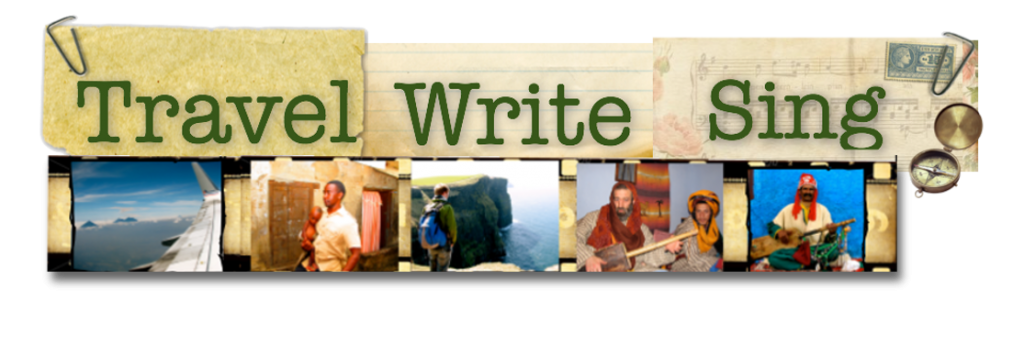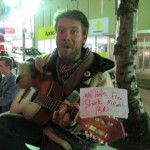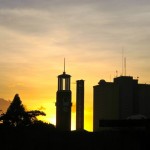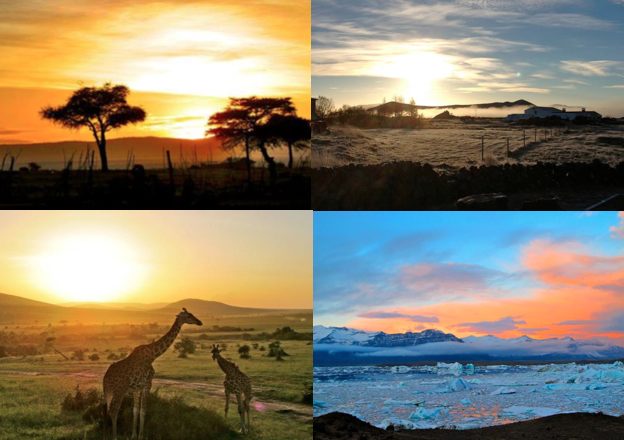
Thomas is an orphan from a village west of Kisumu, Kenya. He was born a few hours from where my adopted Kenyan brothers were orphaned. From an early age, he saw education as his ticket to a better life. He studied hard and in college he was awarded a scholarship to study in Iceland.
When he returned to Kenya, he saw his old world with new eyes and a burning resolve. He saw orphans like him not being given opportunities and felt a tugging obligation to give these children the chance of a choice. He and his wife began giving what they could to support a few penniless students’ education.
In life you go with what you know and Thomas knew Iceland from his time abroad. His original goal was to return to Iceland and raise money for more students to go to school. He was ready to work hard, but not prepared to face people’s doubt. It was one thing to encounter people who declined to give a donation, but another to deal with people who questioned his integrity.
“How do I really know that this money is actually going to help orphans in Africa?” people would ask the reasonable question when he sought a donation.
It may be a reasonable question, but for one who is dedicating his life to help put children in school, it can be a cruel question on par with asking “how do we know you love your wife?”
Rather than get discouraged, Thomas shifted gears. Instead of starting a regular charity that goes out and asks people to donate money, he would start a business and use the profits to help children.
One again, he stuck with what he knew. He knew Kenya and he knew Iceland. So he brought Kenya to Iceland. That’s where I met him, the most out of place vender in Reykjavik’s Kilaportid Fleamarket.
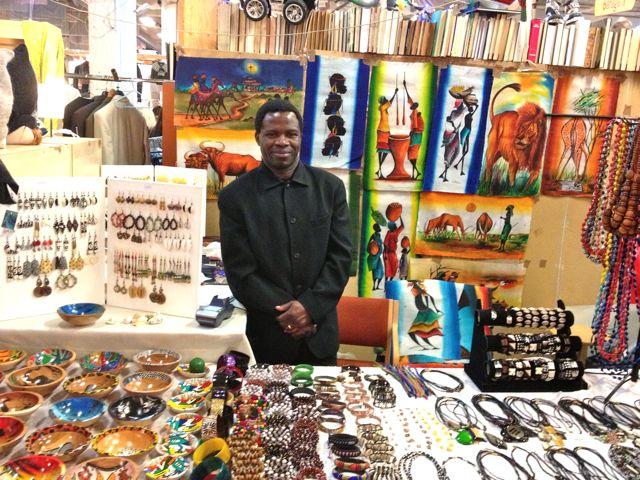
I had come to the market to look for a sweater for my sister and was walking around frowning at prices when I suddenly had a flashback to eight-months prior when I was purchasing gifts in Nairobi, Kenya’s Maasai Market. Here was Kenya, breaking the monotony of Icelandic Sweaters, books, cod, fermented shark, and local crafts.
On Thomas’ table sat soapstone bowls, colorful hippos, little lions, carved elephants, paintings of zebras, bracelets, beaded earrings and necklaces. I walked up to him and greeted him in Swahili. He started and asked me how I knew Swahili. I explained to him I had two brothers from Kenya from the Kisii tribe and had spent three months there earlier that year.
He told me he was from a village Kisumu, which meant he was of the Luo tribe, the one tribal language that I happened to know how to saying anything in.
“Idinayde,” I said, unable to help myself. “What’s up?” He threw his head back and laughed before a recovering sigh “I never expect a person to come in here and say this.”
He was not going to get rid of me without me hearing what he was doing in Iceland selling Kenya and was happy to tell me his tale.
“Tears Children” is the name of his organization through which he is able to put 150 kids, many orphans, in school due to the profits of his Icelandic market stall selling Maasai kitsch.
“90% of the problems in the world are from negligence,” he explained, “negligence of government and negligence of neighbors.”
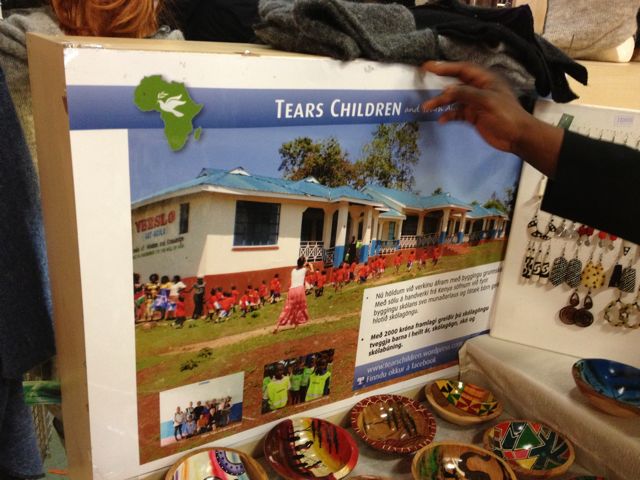
He told me about his childhood. He witnessed women who went into prostitution to feed children who then, without the opportunity for education, turned to drugs and crime.
“I call it ‘Tears Children’ because children all over the world are crying. They are crying for bread, crying to go to school, crying for their mothers.”
“I didn’t want to spend an hour trying to convince someone who doubted me to give me $10, so I started this business.”
Having seen how much such goods cost in the Maasai Market, his 20x markup must make for a healthy profit margin. From that he is able to do more than support a few children in their studies. Tears Children has opened up its own school and 150 children have the opportunity of an education due to bracelets and bowls being sold in a flea market in Iceland.
Thomas believes that through open sharing of ideas and mutual corporation, that all the problems in the world caused by negligence can be remedied. “People believe that supporting a project is giving money. But it is also ideas, so if you have any ideas to share, please do.”
We exchanged emails and I told him we could swap notes and share ideas. At the start of the year I traveled around the Kisumu area of Kenya. I must have been within fifty miles of the Tears Children School, oblivious of its existence until this serendipitous meeting in Iceland.
Here is the part of the post where I usually post a link to where you can give a donation, but Tears Children is not that kind of charity. So instead of worrying about where to send a donation, let’s just smile today and be glad. Because somewhere in the North Atlantic, on an infant volcanic island, near the shipyards of the Reykjavik, is a warehouse where an orphan from Kenya sells Maasai artistries every weekend so that during the week 150 kids in a village west of Kisumu have a place to be and learn. It’s the most unlikely arrangement and what can you do but smile at how the world weaves in and out of itself in enigmatic ways?
